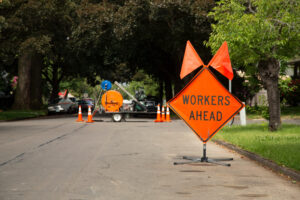 Ensuring safety within construction zones is a matter of paramount importance. Not only does it protect workers and pedestrians, but it also facilitates a smoother traffic flow and minimizes the risk of accidents. Adherence to strict traffic management practices can drastically reduce the incidence of mishaps and improve the overall efficiency of construction projects.
Ensuring safety within construction zones is a matter of paramount importance. Not only does it protect workers and pedestrians, but it also facilitates a smoother traffic flow and minimizes the risk of accidents. Adherence to strict traffic management practices can drastically reduce the incidence of mishaps and improve the overall efficiency of construction projects.
The SSTC (Safe and Sound Traffic Control) initiative was established to address this crucial issue. It presents a multi-pronged approach to construction zone safety and encourages industry-wide adoption of traffic management best practices to ensure maximum safety. This article will delve into these practices and see how they significantly enhance safety in construction zones.
- Establishing Clear Signage
Clear signage is the first step in effective traffic management. Signs should be displayed from a distance to give drivers ample time to adjust their speed or direction according to the upcoming traffic pattern changes.
Use traditional road signs and digital message boards to keep drivers informed about the road conditions ahead. Additionally, signs should be regularly maintained and checked for visibility, especially during inclement weather or at night.
2. Implementing Barrier Systems
 Safety barriers act as a protective shield between the construction site and oncoming traffic. Ensure these barriers are highly visible and sturdy enough to withstand any potential impact. Also, a well-structured barrier system contributes to smooth traffic flow by clearly demarcating lanes and providing visual guidance to drivers. Regular checks should be carried out to ensure that barriers are intact and positioned correctly.
Safety barriers act as a protective shield between the construction site and oncoming traffic. Ensure these barriers are highly visible and sturdy enough to withstand any potential impact. Also, a well-structured barrier system contributes to smooth traffic flow by clearly demarcating lanes and providing visual guidance to drivers. Regular checks should be carried out to ensure that barriers are intact and positioned correctly.
3. Deploying Flaggers
Flaggers play an instrumental role in managing traffic flow. They’re especially critical in areas where the road layout is complex or constantly changing. Trained flaggers can adapt to shifting conditions and effectively control traffic flow. Additionally, providing flaggers with high-visibility clothing and equipment helps to enhance their visibility to drivers, further improving safety.
4. Creating Traffic Management Plans
A well-conceived traffic management plan forms the backbone of safety in construction zones. It serves as a blueprint for identifying potential hazards, outlining emergency procedures, and defining clear roles and responsibilities for each team member. Regularly updating and reviewing this plan in light of changing site conditions or project phases is just as important as creating it.
5. Training and Education
Regular training sessions and education programs for your team are key to safety. These sessions should include practical demonstrations and drills to ensure everyone is well-versed in the safety procedures and can respond effectively in emergencies. Furthermore, awareness programs about the importance of adhering to safety protocols can help instill a safety-first culture within the organization.
6. Regular Maintenance and Inspection
Routine maintenance and inspection of equipment, signs, and barriers ensure they function optimally and reduce potential risks. Maintenance schedules should be strictly adhered to, and any defects or damage should be promptly addressed. Regular inspections also identify potential safety issues before they escalate into major problems.
7. Utilizing Technology
The role of technology in enhancing traffic safety cannot be overstated. Surveillance cameras, smart signage systems, and advanced flagging equipment are examples of technology used to improve safety in construction zones. Apart from enhancing safety, these tools also improve the efficiency and productivity of construction operations.
8. Consistent Communication
Consistent and clear communication within the team and with the public is integral to safety in construction zones. Team members must be updated about any site conditions or plan changes. Similarly, the public should be informed about ongoing construction activities and potential traffic disruptions. Platforms like social media or local news outlets can keep everyone informed.
Each practice is pivotal in ensuring a safe environment within construction zones. Their effectiveness, however, lies in their consistent application and periodic review.
9. Implementing Speed Controls
Speed control is another critical aspect of traffic management in construction zones. Reduced speed limits should be enforced in these areas to account for road conditions or traffic pattern changes. Speed control devices such as speed bumps or rumble strips can be installed to compel drivers to slow down.
Moreover, authorities should consider imposing strict penalties for violations to ensure compliance. Regularly monitoring the effectiveness of these speed controls and making necessary adjustments are equally important. After all, maintaining a safe speed within construction zones is crucial for the safety of both drivers and workers.
10. Ensuring Adequate Lighting
Adequate lighting is vital, particularly for construction zones active during non-daylight hours. Well-lit areas can significantly reduce the risk of accidents by increasing visibility for construction workers and drivers.
Install high-quality, weather-resistant lights that adequately illuminate the area. Special attention should be given to areas where work is being done, or equipment is stored.
Conclusion
In conclusion, effective traffic management in construction zones is a multi-faceted effort. It involves clear signage, robust barrier systems, trained flaggers, comprehensive traffic management plans, regular training, diligent maintenance, effective use of technology, and clear communication. When these practices are meticulously followed, they ensure a safer construction zone for all.


